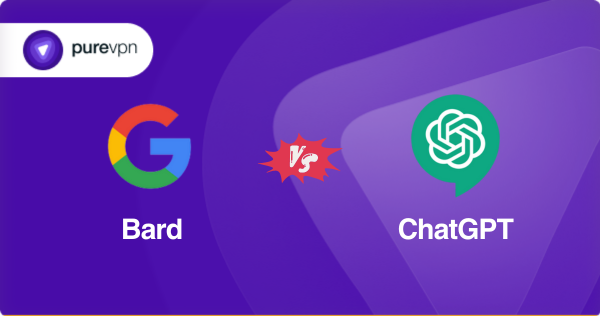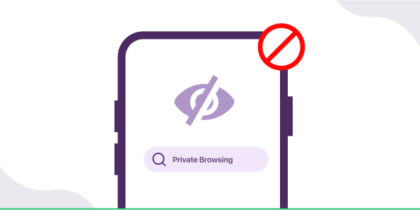Table of Contents
As the battle of AI-generated content unfolded, ChatGPT stepped into the limelight, dazzling audiences with its linguistic prowess. Not to be outdone, Google unveiled its creation, Bard, ready to take the stage. While both ChatGPT and Bard may share the spotlight, they bring their unique flair to the virtual world of AI bots, showcasing distinct nuances in their content production.

What is Bard?
Bard is Google’s latest chatbot powered by their advanced LaMDA language models. It was built in response to the popularity of ChatGPT from OpenAI.
On March 21, 2023, Google kicked off its Bard waitlist, giving eager users in the US and UK a chance to join in. Access will be granted to a limited number of users on a rolling basis, and Google is keen to collect early feedback to further enhance its AI chatbot.
What is ChatGPT?
ChatGPT is a cutting-edge language model developed by OpenAI, designed to generate human-like text responses conversationally.
ChatGPT is easily accessible for everyone to try out without any cost. Its widespread availability right from the beginning has been a key factor in its quick rise in popularity.
Recently, they have introduced a premium version of ChatGPT called ChatGPT Plus, which offers a host of additional features for a monthly fee.
Subscribers can enjoy perks like accessing GPT-4, OpenAI’s more advanced large language model, and even gaining access to GPT-4 via Microsoft’s implementation in Bing Chat.
How to access Bard
To access Bard, first, you’ll have to join its waitlist. Here’s how you can do that:
- Visit the Google Bard homepage.
- Click on the blue “Join waitlist” button.
- If you’re signed into your Google account, proceed to the next step. If not, sign in or create a new Google account.
- After signing in, opt-in to receive emails about Bard and officially join the waitlist.
Once you get access to Google Bard, just simply sign in with your Google account and you are ready to go.
How to use Bard
- Enter your prompt in the text box and press enter to start a conversation.
- Bard’s responses are easily digestible, breaking down content for easy scanning.
- It also supports rich text formatting like bullets and bold text.
How to access ChatGPT
- Go to chat.OpenAi.com
- Register for an account with an email address or a Google/Microsoft account
- Login and access ChatGPT
- Read through the terms and disclosures
- Click on Next for each one
- Click on Done when you reach the last one
How to use ChatGPT
- To utilize ChatGPT, simply enter your prompts in the text bar at the bottom of the page and press enter to submit your questions.
- The AI chatbot will then generate text in an attempt to provide helpful answers based on your prompts.
Bard VS ChatGPT: What are the main differences?
- Data source
Bard’s training data, sourced from Infiniset, consists of a wide range of data, including Common Crawl, Wikipedia, documents, conversations, and dialogues from the web. This diverse dataset provides Bard with a strong foundation for generating text and understanding language.
Also, it retrieves information from the web in real time. This allows Bard to provide the latest answers to questions and access the most recent research available.
In contrast, ChatGPT’s training data includes a diverse range of sources such as Common Crawl, Wikipedia, books, articles, documents, and content scraped from the open internet.
This wide-ranging dataset contributes to the model’s ability to generate text across different domains and topics, but ChatGPT’s sources are limited to data up until 2021, which may result in less current research and information.
- Language model
Bard utilizes Language Model for Dialogue Applications (LaMDA), a language model developed by Google that is specifically designed for dialogue applications.
On the other hand, ChatGPT uses GPT-3.5, a different language model developed by OpenAI.
- Tone of speech
LaMDA is designed to produce responses that are incredibly authentic and indistinguishable from human speech. It can seamlessly switch context when the user changes the topic, much like how humans do.
However, sometimes LaMDA’s authenticity can be overwhelming, as it tends to claim to have feelings, which can be unsettling and often inaccurate.
On the other hand, GPT is aware of its identity as a bot and does not try to deceive users otherwise. It is widely recognized as the industry standard for natural language tasks and powers various AI tools such as Jasper, Copy.ai, and Bing AI tools.
GPT is extensively trained in web text and focuses on generating text based on statistical patterns. While it functions as a chatbot within ChatGPT, it also serves other roles such as summarizer, translator, and more, with a focus on textual tasks.
- Training and approach
LaMDA is trained on an open-source network, allowing it to understand natural language and create dialogue by identifying patterns in sentences and words.
In contrast, GPT-3.5, used in ChatGPT, may focus more on individual words rather than patterns in sentences.
- Content generation
Bard is capable of generating larger pieces of information in the form of multiple chunks.
ChatGPT in comparison, typically generates content in a single text prompt. This may result in differences in the style and structure of the output from the two models.
- User-friendly features
With Google Bard, you can use your device’s microphone to provide prompts by voice, allowing for a hands-free experience. Additionally, it includes a “Google it” button that provides in-line links for further research outside of Bard. Another useful feature is the “drafts” option, which offers various response options for each prompt you enter.
This makes it easier to find the right response to suit your needs. Bard also allows you to view previous prompts by clicking on “Bard activity,” where you can see details or delete them from history. Also, you can disable the storage of your activity if you wish.
In contrast, ChatGPT organizes prompts into conversations, which it displays in the sidebar. This approach is helpful for longer chats on specific topics. However, scrolling back to view responses to particular prompts can be cumbersome.
On the bright side, ChatGPT provides a dark mode for easier viewing and the ability to clear all conversations. You can also rename or delete specific conversations as needed.
Limitations of Bard
Inaccurate or misleading responses
- Despite being trained to generate contextually relevant responses, Google Bard may occasionally provide information that is inaccurate or misleading, even if it does so confidently and convincingly.
Source: telegraph.co
Potential bias in responses
- As with all Language Models (LLMs), Google Bard uses training data from diverse sources, which may contain gaps, biases, and stereotypes. This can result in the model reflecting these biases in its responses, unintentionally.
Source: Buckeyefirearms
Development of “Personality”
- Google Bard may generate responses that seem to suggest opinions or emotions, as it is trained on the language used to reflect the human experience. This could potentially result in responses that appear to have a personality or subjective bias.
Source: Buckeyefirearms
Source: Reddit
Inappropriate responses
- While Google has implemented technical guardrails to prevent Bard from returning problematic responses, such as harmful or offensive content, there may be instances where the model misinterprets these guardrails, leading to false positives or false negatives in filtering inappropriate responses to prompts it is not yet trained to address.
Limited access
- Bard is available to users in the US and UK only. But even they’ll have to join a waitlist to access it. Also, Google has specified that users should be 18 years of age or older to try Bard and contribute to its ongoing improvement process.
Limitations of ChatGPT
Challenges with contextual understanding
- ChatGPT may struggle to comprehend context, including sarcasm and humor, due to its limitations in grasping subtle nuances of human communication, despite its language processing proficiency.
Difficulty with multiple tasking
- ChatGPT is most effective when given a single task or objective to focus on. Attempting to perform multiple tasks simultaneously can result in decreased accuracy and effectiveness as the model struggles to prioritize tasks.
Potential for biased responses
- ChatGPT’s training data includes a large set of text data, which may contain biases or prejudices. As a result, the AI may inadvertently generate biased or discriminatory responses at times.
Limited knowledge base
- Despite having access to vast information, ChatGPT may not possess all the knowledge that humans do and do not have any knowledge of events after 2021. It may struggle with specific or niche topics, and may not be aware of recent developments or changes in certain fields.
Grammatical errors
- ChatGPT’s sensitivity to typos, grammatical errors, and misspellings is limited. Additionally, while responses may be technically correct, they may lack accuracy or relevance in terms of context. This can be especially challenging when processing complex or specialized information, necessitating verification of information generated by ChatGPT.
Pricing of Bard
When it comes to pricing, Google Bard with limited access is free for now. Since it’s still being experimented on, it’s hard to say what Google will price it once it gains more popularity.
Pricing of ChatGPT
ChatGPT has a basic and pro version. Its basic version using GPT-3.5 is completely free to all but with limited knowledge and features. Its pro version called ChatGPT Plus using GPT-4 is priced at $20 per month.
Is it safe to use Bard and ChatGPT?
Google Bard and ChatGPT both have some risks attached to them:
Privacy concerns
- As with any AI tool, there may be concerns about the privacy of data provided to Google Bard or ChatGPT. Users should be cautious about sharing personal or sensitive information and review the privacy policies of these platforms to understand how their data is collected, stored, and used.
Data misuse
- AI models like Google Bard and ChatGPT rely on vast amounts of data for training, and there is a possibility of data misuse or unauthorized access.
Misleading information
- AI models generate text based on patterns learned from data, but they may not always be accurate or reliable. There is a risk of receiving misleading or incorrect information from Google Bard or ChatGPT.
Employ PureSquare to stay safe while using ChatBots
Keeping yourself secure while using AI tools is very important because as humans, we tend to overshare thinking the platform is safe to share personal information. But data breaches and privacy issues are major problems attached to AI tools.
So, to stay safe, invest in security tools like PureSquare. Which includes PureVPN, PurePrivacy, PureEncrypt, and PureKeep.
- PureVPN – Keeps you anonymous and safe while masking your IP address.
- PurePrivacy – Discovers at-risk data and keeps your privacy in check.
- PureEncrypt – Prevents data breaches while keeping your data and files safe.
- PureKeep – Provides a safe vault to manage and secure all your passwords.
Concluding thoughts
When pitting ChatGPT against Google Bard, it’s crucial to note their distinct design nuances. ChatGPT excels at weaving words into captivating text and crafting concise summaries, while Google Bard is a master at surfacing information right from the web. But It’s still very early to predict which bot will outperform the other.
Frequently Asked Questions
No, ChatGPT is not replacing Google. While ChatGPT is a powerful language model that can provide conversational responses and assist with various tasks, it is not designed to replace Google as a search engine.
As of now, Bard is still in the process of learning to generate code, and responses related to coding are not officially supported. ChatGPT on the other hand can generate code snippets in popular programming languages like JavaScript, Python, C#, PHP, Java, and more.
ChatGPT is a versatile multilingual chatbot that boasts support for over 50 languages. Some of the supported languages include English, Spanish, French, German, Chinese, Japanese, Arabic, and many others. Bard right now only supports the English language since it’s accessible to US and UK citizens now.
No, Bard is unavailable at this for people outside the US and UK. To get access, you can subscribe to a premium VPN like PureVPN and enjoy the word game.



